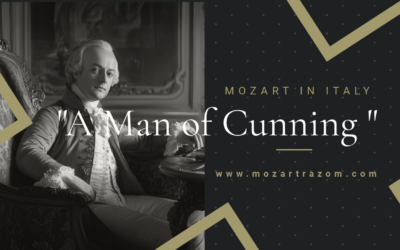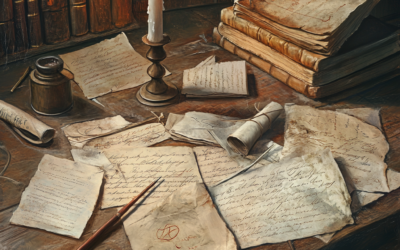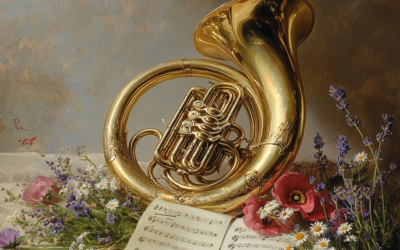Truth or Deception?
The Curious Case of Mozart’s "Lullaby"
Examining the murky history of “Schlafe mein Prinzchen, schlaf ein” and its questionable authorship
In the sprawling world of Mozartian myths, few tales have endured as long or as stubbornly as the origins of the lullaby Schlafe mein Prinzchen, schlaf ein (“Sleep, My Little Prince, Go to Sleep”).
For nearly two centuries, this piece has been attributed to Wolfgang Amadeus Mozart, despite enduring questions over its authenticity.
First published by Nissen, Constanze Mozart’s second husband, it was only in 1826 that he informed publisher André of the piece’s dubious provenance. While “experts,” Nissen claimed, deemed it worthy of Mozart, Mozart’s sister, Nannerl, held no memory of her brother writing such a tune.
Intriguingly, Constanze, usually vocal in promoting her husband’s legacy, made no public comment, though her personal diary reveals a hint. In a September 17, 1798 entry, she wrote of sending “another piece of Mozart’s in place of the lullaby” to Dr. Feuerstein. Did she suspect, even then, that Mozart may not have authored this work?
Mozart: The Fall of the Gods
This book compiles the results of our studies on 18th-century music and Mozart, who has been revered for over two centuries as a deity. We dismantle the baseless cult of Mozart and strip away the clichés that falsely present him as a natural genius, revealing the contradictions in conventional biographies. In this work, divided into two parts, we identify and critically analyze several contradictory points in the vast Mozart bibliography. Each of the nearly 2,000 citations is meticulously sourced, allowing readers to verify the findings. This critical biography of Mozart emerges from these premises, addressing the numerous doubts raised by researchers.
"Truth in music, as in history, requires more than wishful attribution."
Mozart: The Fall of the Gods
Constanze’s Unreliable Testament
Constanze Mozart remains a controversial source on matters of Mozart’s oeuvre. Could her diary entry imply her own doubts? Over time, the lullaby’s shaky origins gained traction, with figures like Johann Evangelist Engl, a prominent advocate of Mozart’s legacy, affirming the lullaby’s authenticity in the 1892 Annual Report of the Mozarteum. His stance solidified the piece in the Köchel catalogue as K.350. But musicologist Max Friedländer refuted this claim, proving that this celebrated lullaby was, in fact, the work of Bernhard Flies, a minor composer who published it in 1795. Later research revealed that even Flies had borrowed it from an earlier melody by Johann Friedrich Anton Fleischmann. Over time, Fleischmann’s lullaby became mistakenly attributed to Flies, then to Mozart—a confusion that would last over fifty years and persist, falsely, to this day.
An Ideological Battle for “Mozart’s” Lullaby
In 1944, as authenticity disputes resurfaced, German musicologist Herbert Gerigk, known for his involvement with Nazi-aligned musical publications, took a vehement stance. For Gerigk, Friedländer and Einstein’s work discrediting the lullaby’s Mozartian origins was not just a scholarly objection—it was an affront to Aryan cultural purity. Rather than acknowledging scholarly evidence, he painted Flies, Friedländer, and Einstein as scheming Jewish interlopers. “The German people desire this piece for Mozart,” he argued, sidestepping questions of authenticity in favor of ideology. The result was a chilling example of musical propaganda in service of the regime.
The Apocryphal Piece That Refuses to Die
Today, this questionable lullaby persists in Mozart’s name, nestled innocuously among beginner’s scores. My First Book of Mozart, arranged by David Dutkanicz, includes it as a legitimate Mozartian work, and the Mozart-Schaum Edition, aimed at young pianists, introduces it as “authentic.” Both editions acknowledge its contentious history only in modest footnotes, offering a single line to hint at the debate: “Most people believe this to be Mozart’s work, others say it is spurious.” But, one might ask, does this vague disclaimer suffice to remedy two centuries of mistaken identity?
You May Also Like
Mozart’s Music or Marketing Strategy?
Despite Köchel’s best intentions, his catalogue of Mozart’s works became a commercial tool, filled with questionable pieces added by publishers keen on profit rather than accuracy.
A Revolutionary Encounter at Cremona Musica
Sharing insights on Mozart and the Neapolitan school at Cremona Musica, the premier global stage for music and culture.
#1 A Man of Cunning
In the end, Leopold Mozart’s life was a testament to survival in a world where his talents were often overshadowed by those of his more gifted contemporaries and his own son. While his “Violinschule” remains a notable contribution to music pedagogy, it is clear that Leopold’s legacy is as much about his ability to navigate the challenges of his time as it is about his musical achievements. His story is one of ambition, adaptation, and the lengths to which one man would go to secure his place in history, even if that place was built on borrowed foundations.
@MozartrazoM
Mozart’s Letters: A Legacy of Disappearances, Edits, and Forgeries
Mozart’s letters reveal missing originals, questionable authorship, and forgeries, adding complexity to his legacy.
The Contradictions Behind Mozart’s Horn Concerto K.412
The authenticity of Mozart’s Horn Concerto K.412 remains hotly debated, as the work bears numerous contradictions in its manuscript history. The first movement may be original, but what about the rest? The inclusion of Franz Xaver Süssmayr and later editorial meddling raises serious questions about what we are really listening to when we hear this ‘Mozart’ concerto.
The Questionable Attribution of Mozart’s Offertorium K.34
Attributing Offertorium K.34 to Mozart is not just misleading, it reflects the careless methods used by 19th-century scholars to inflate his legacy. Without an autograph or solid evidence, this work should not be considered part of his output.”







